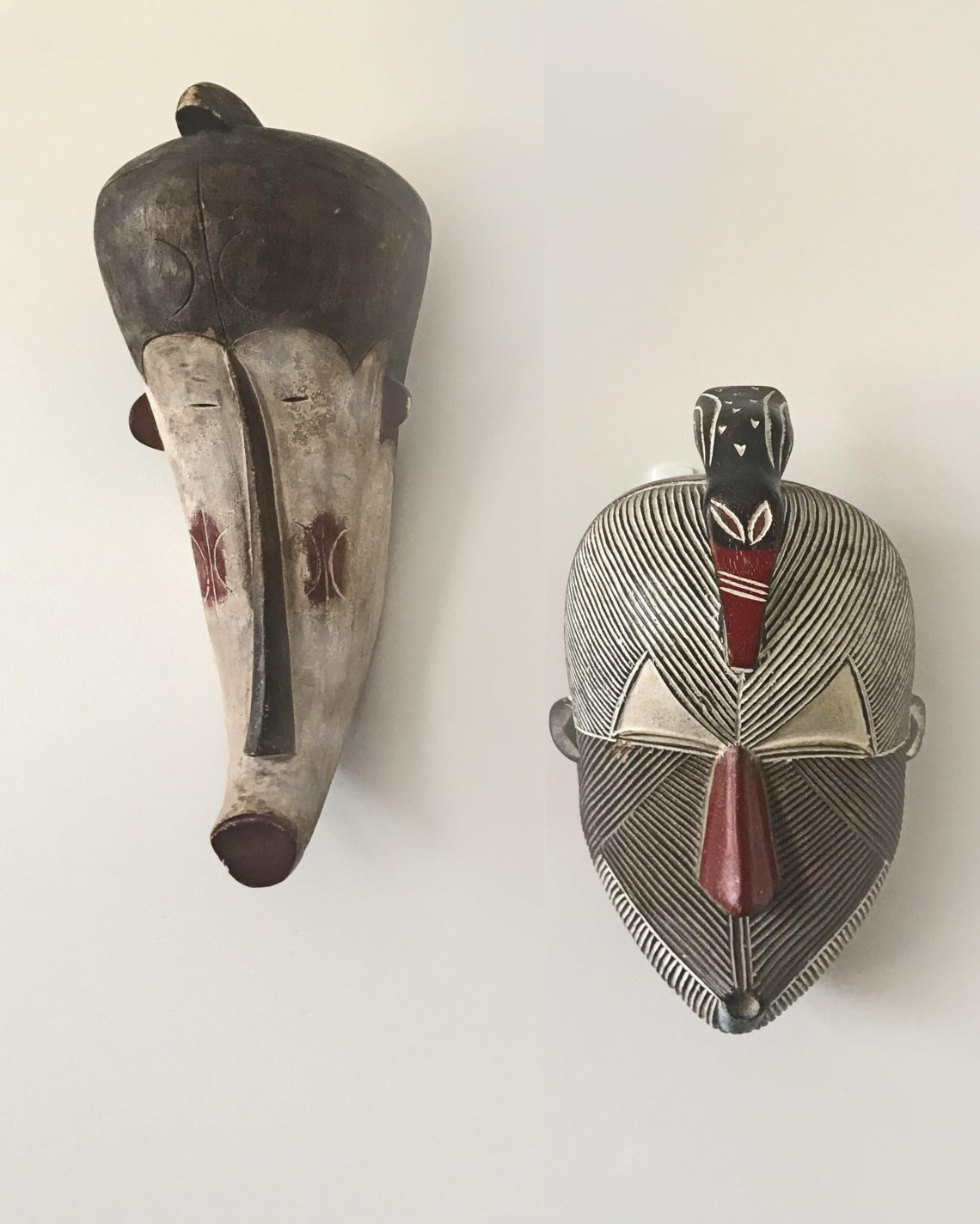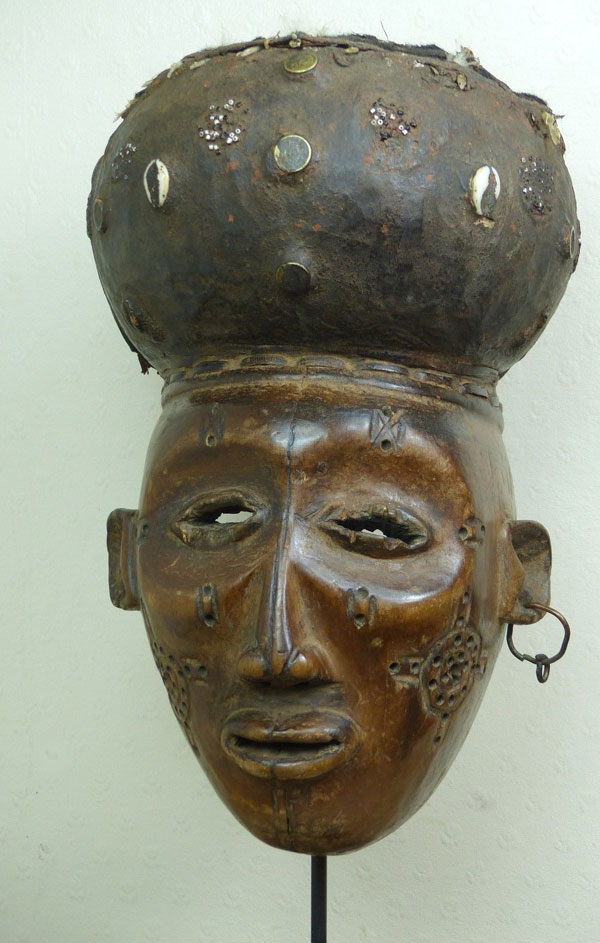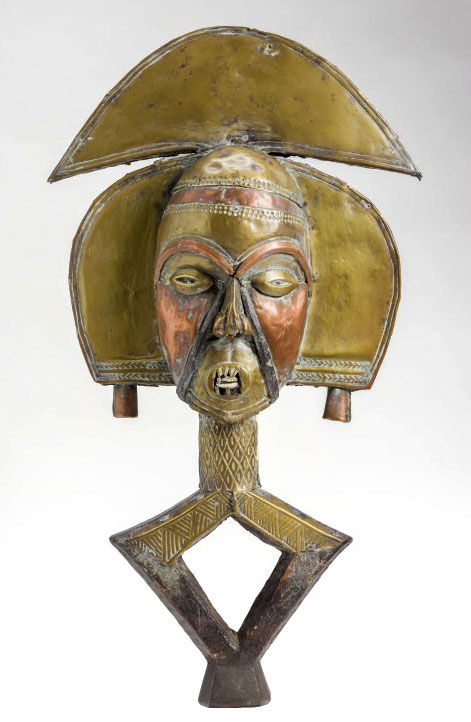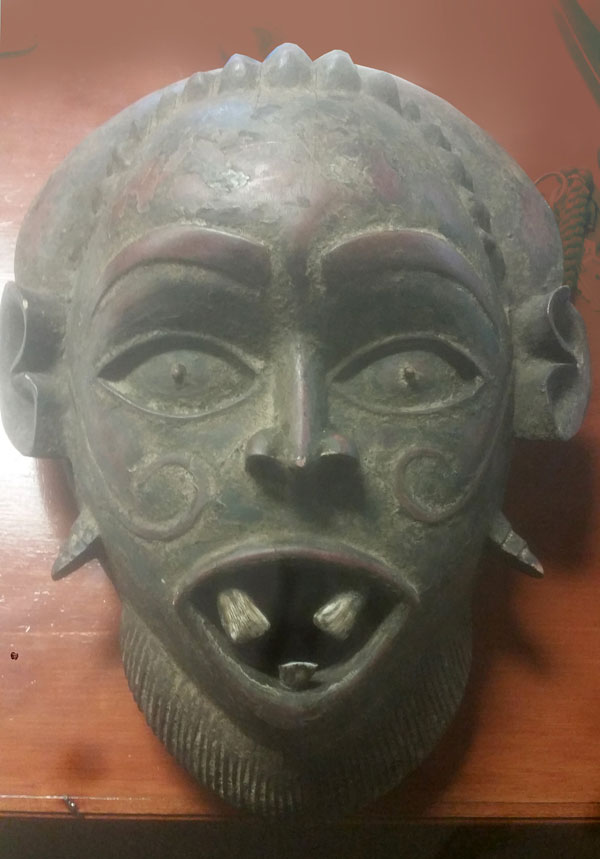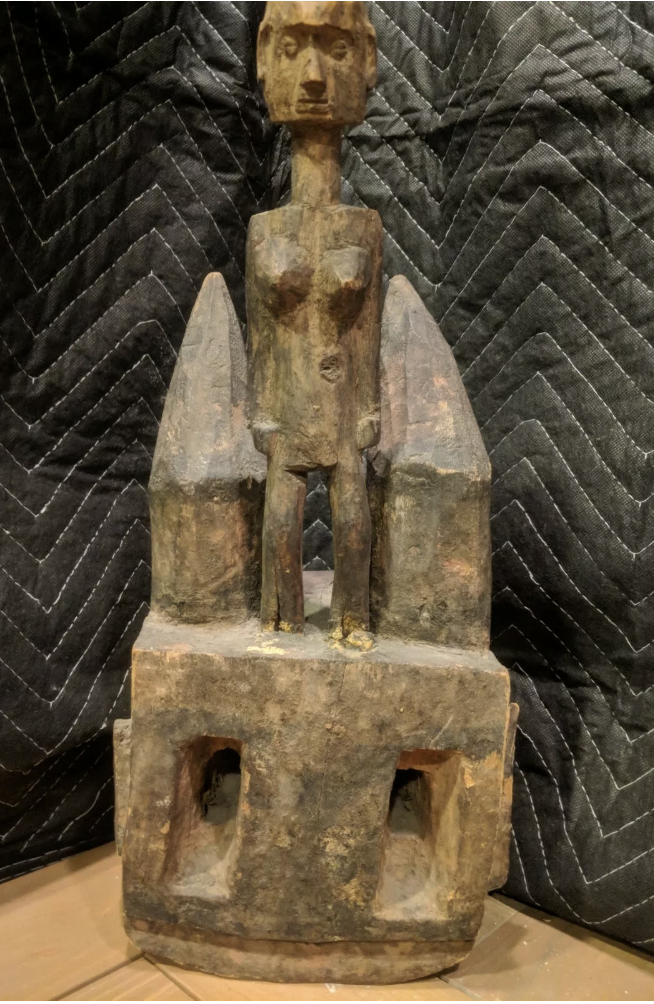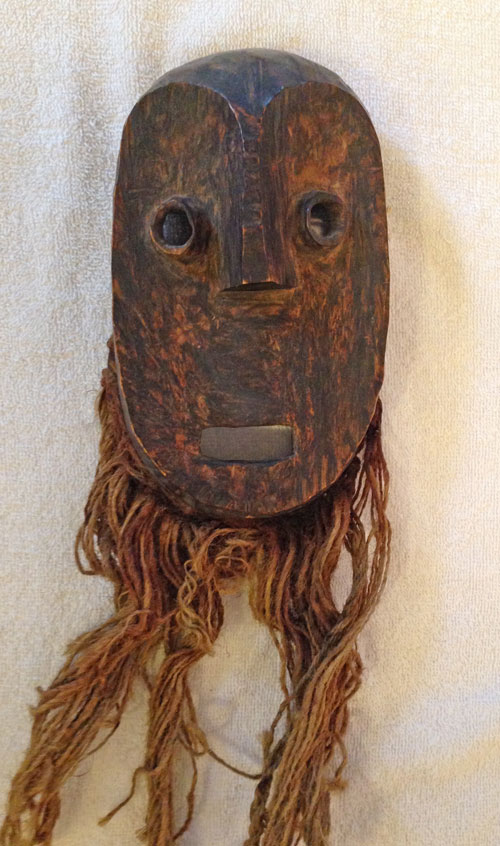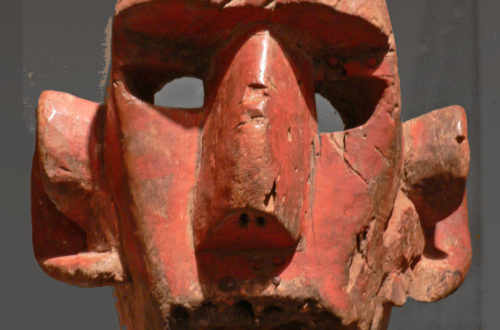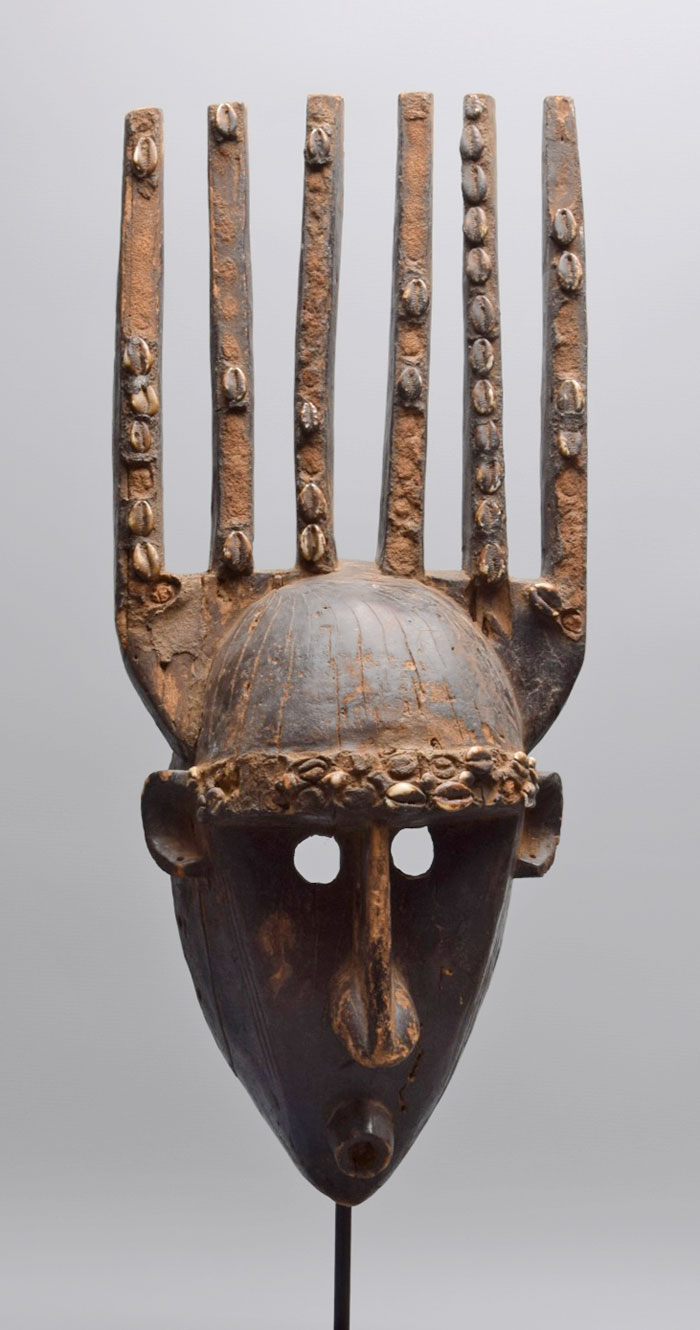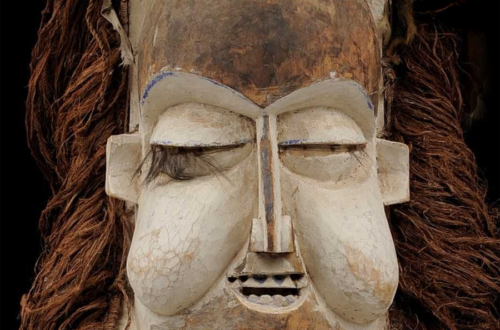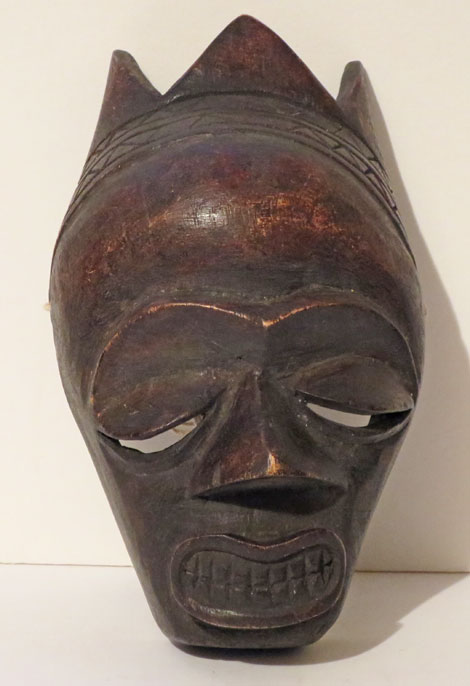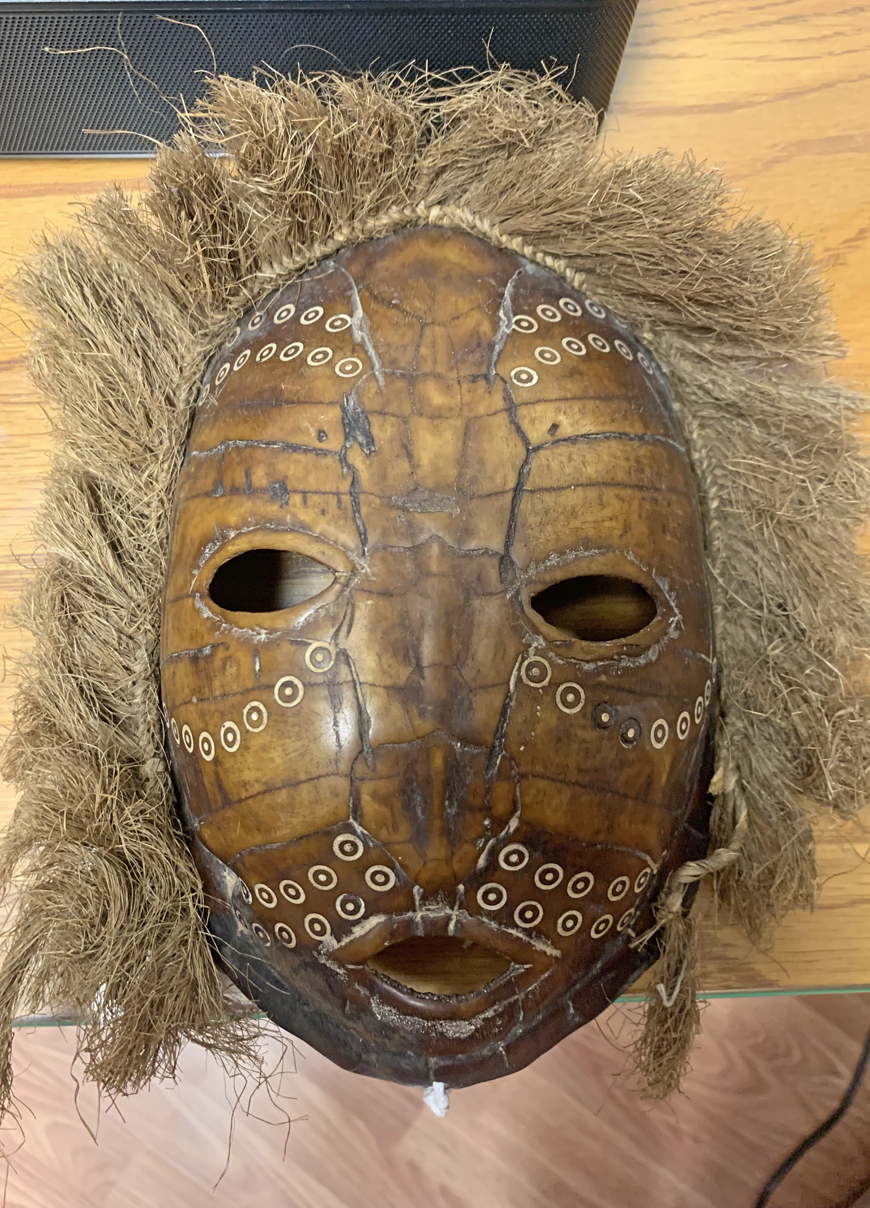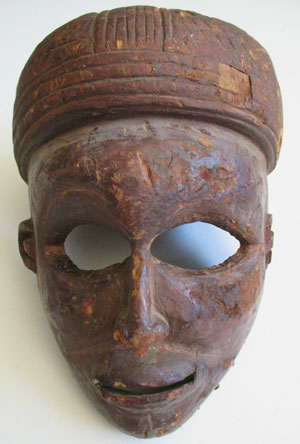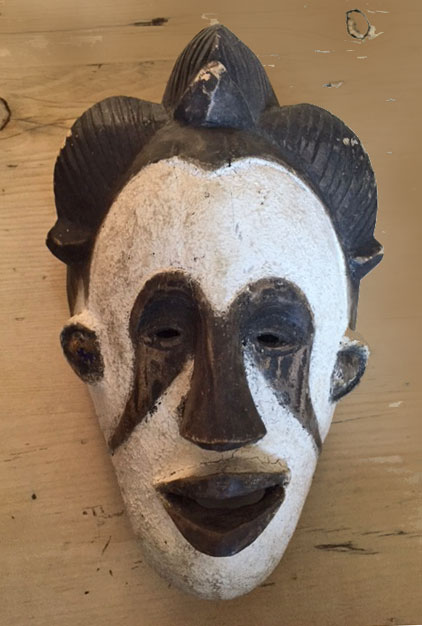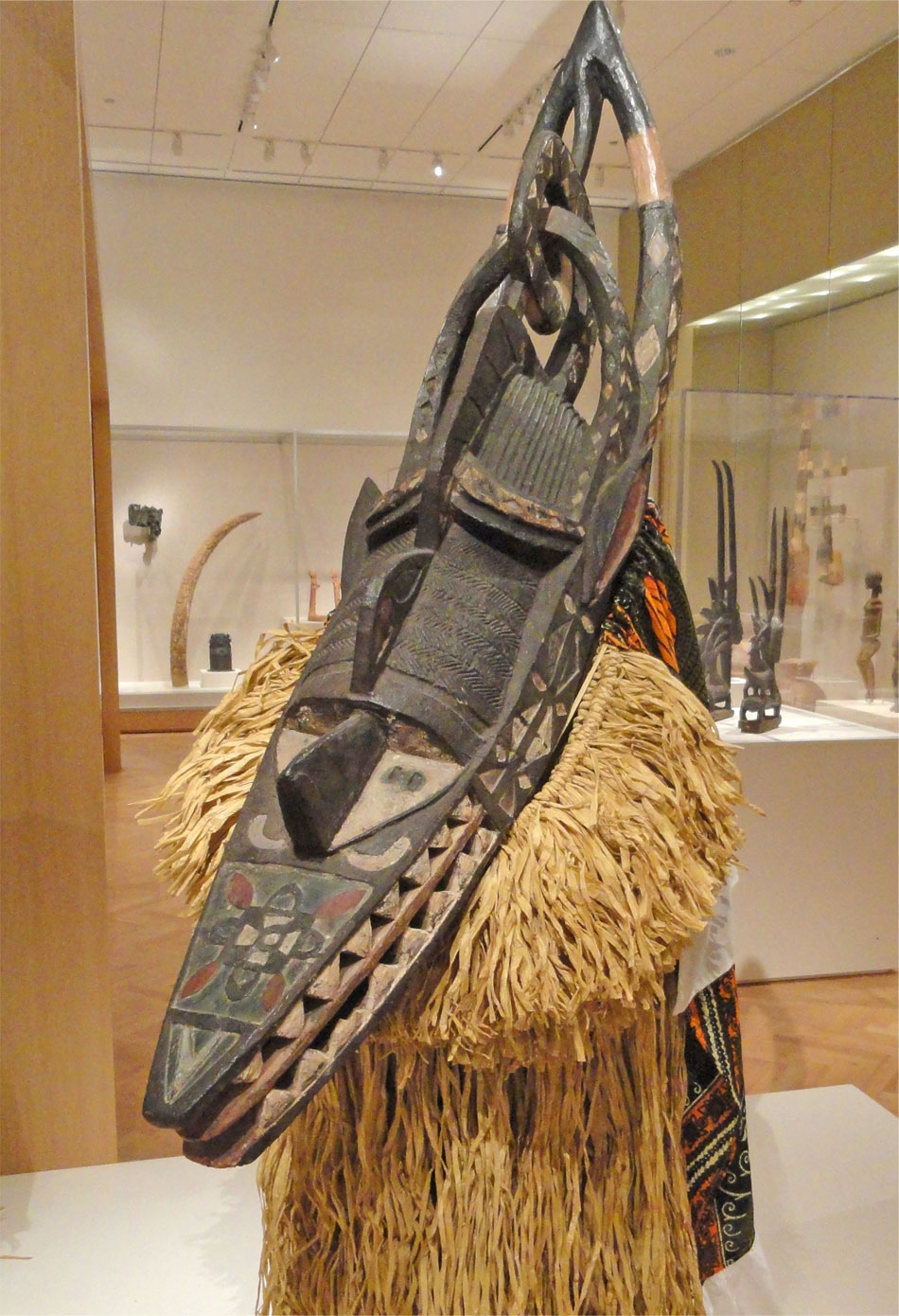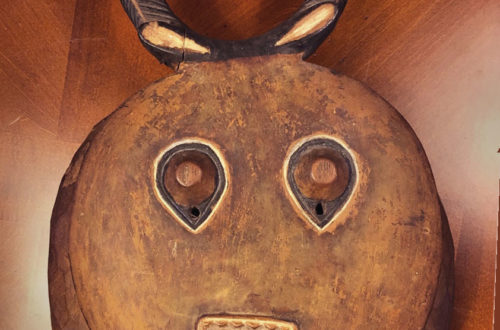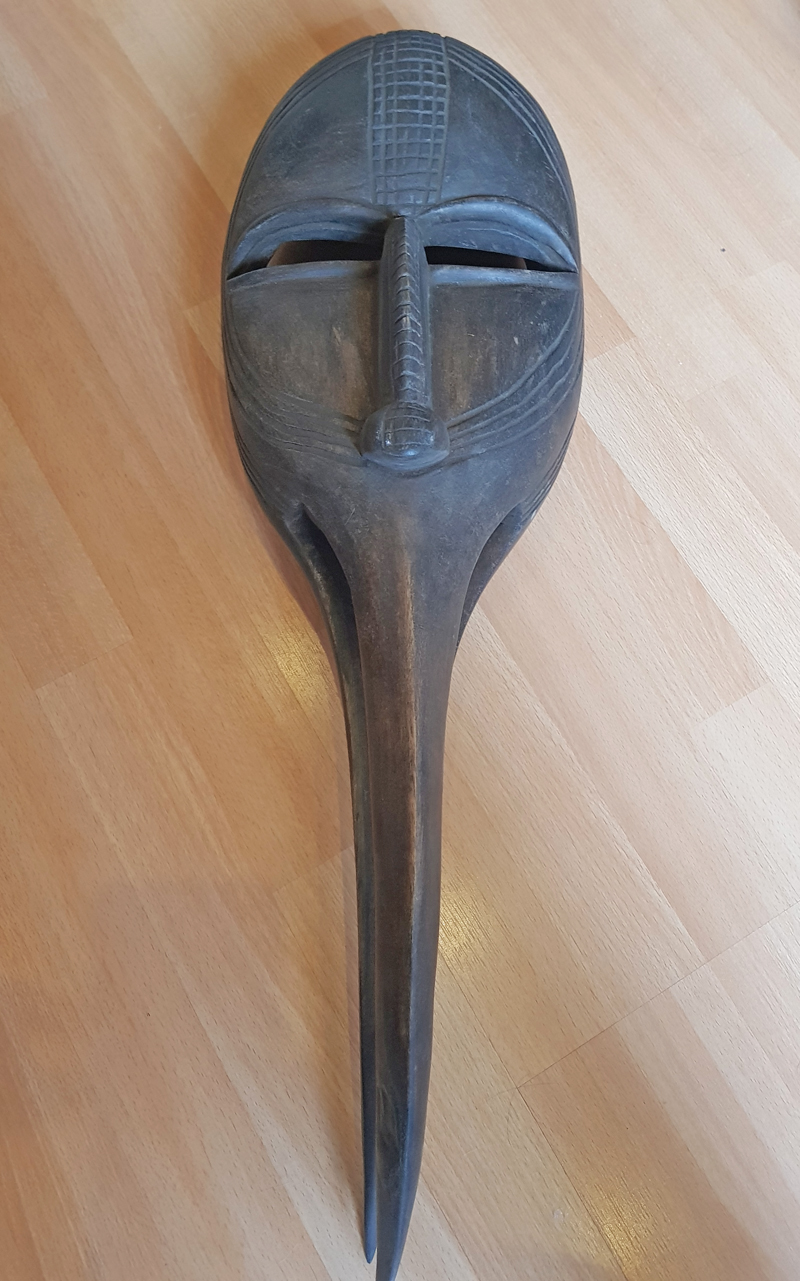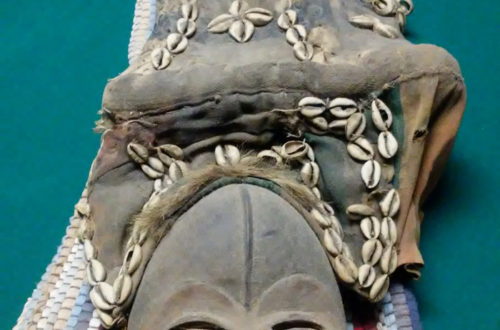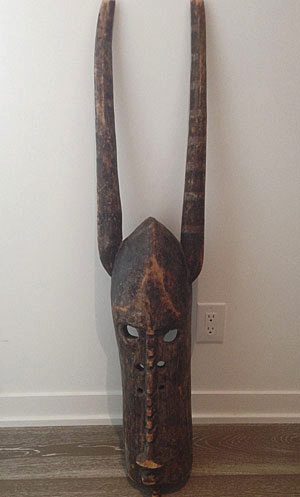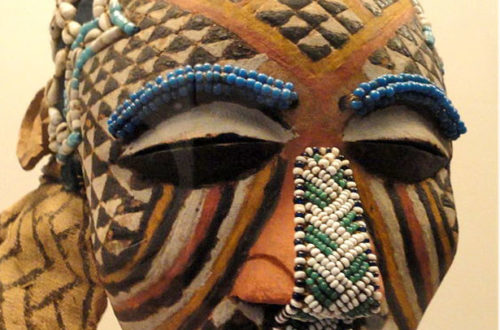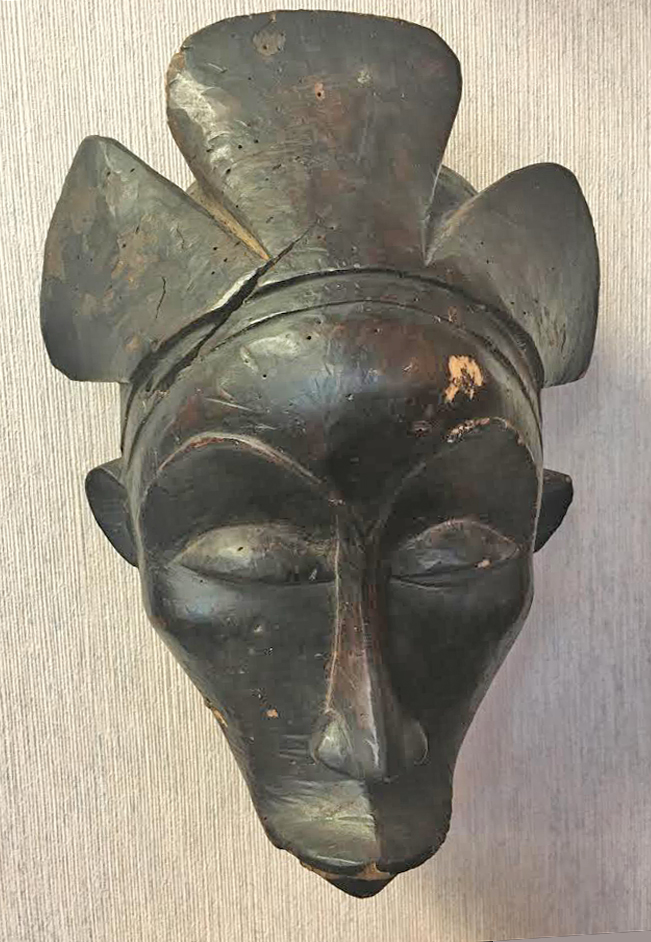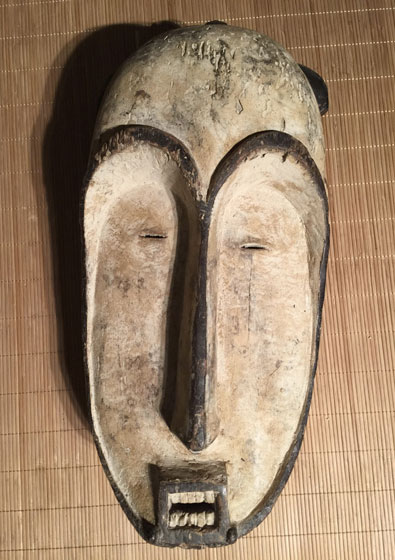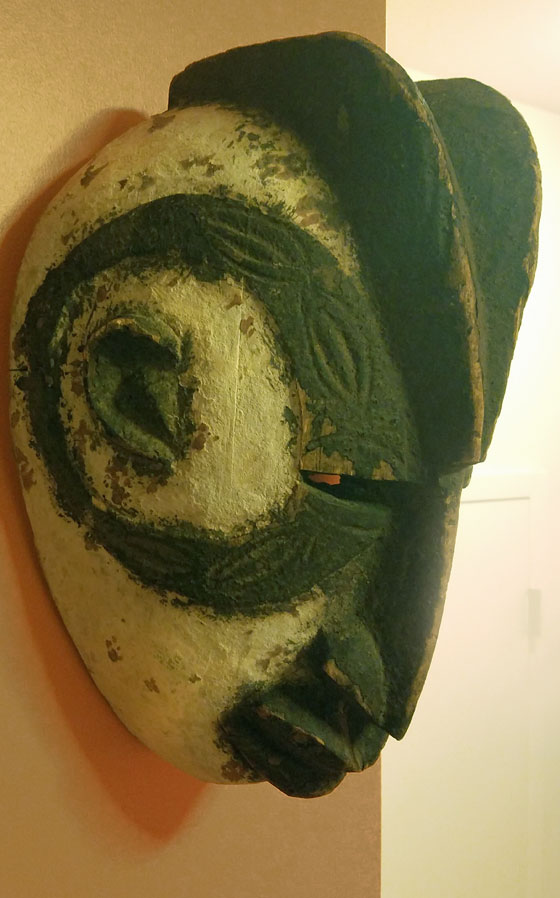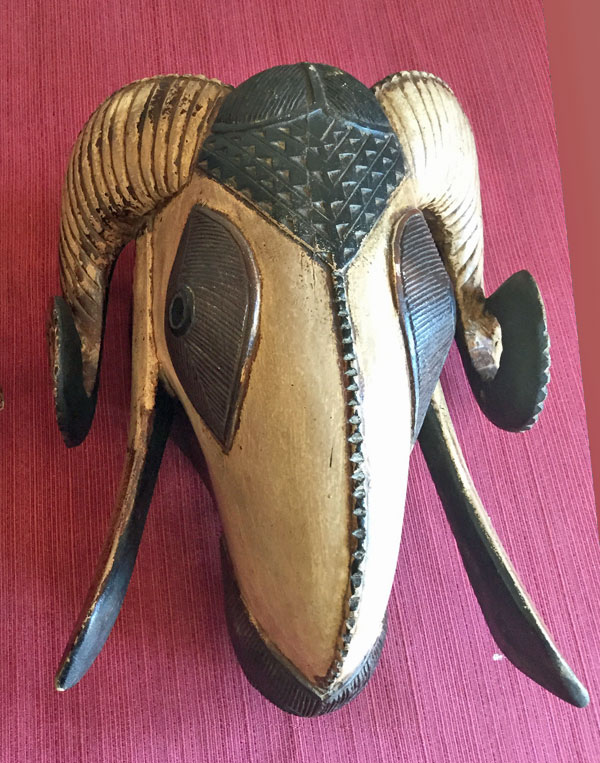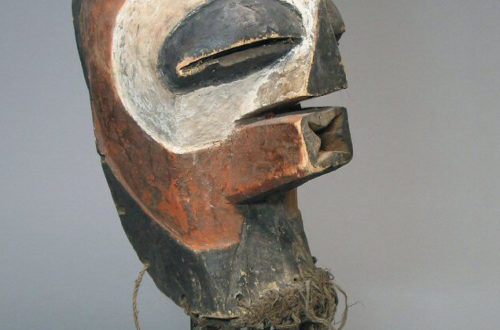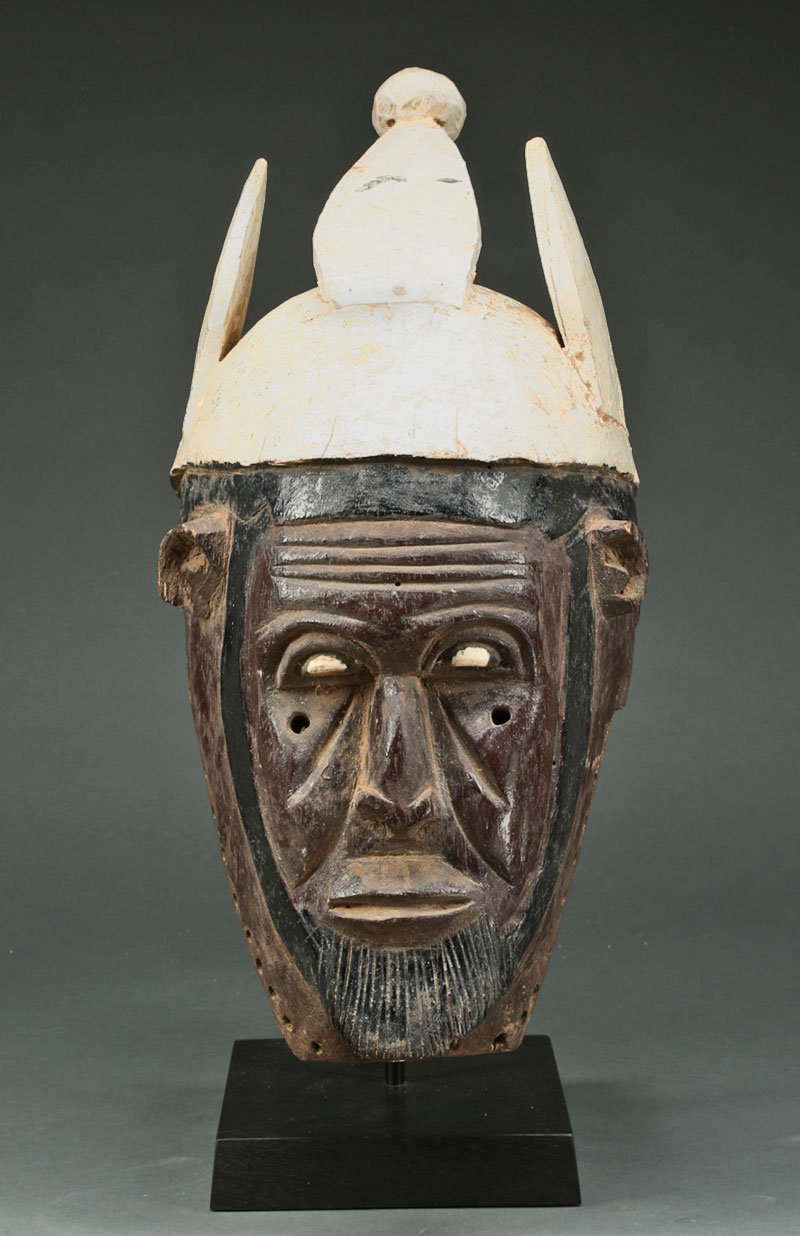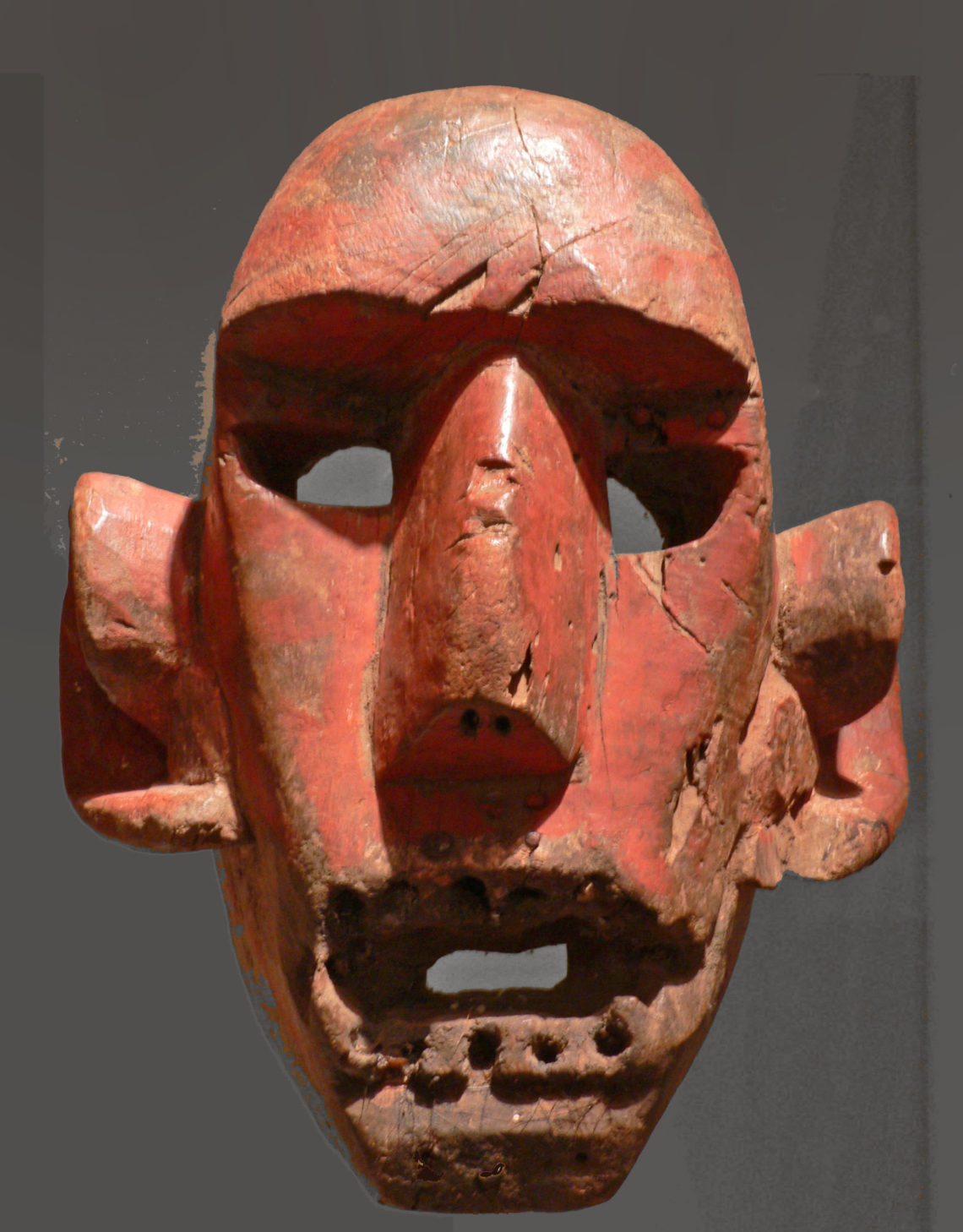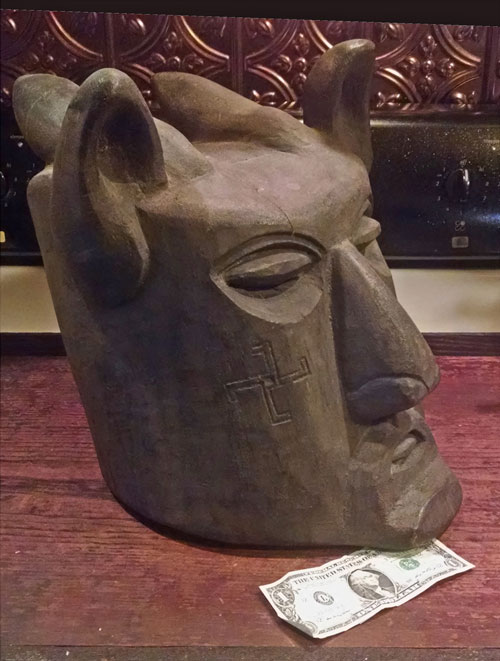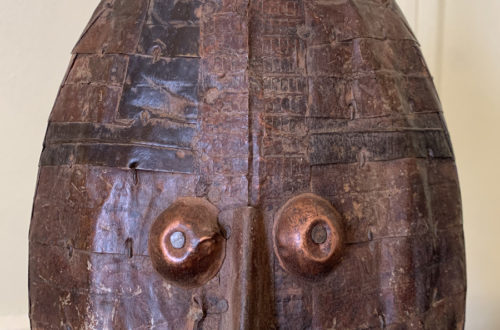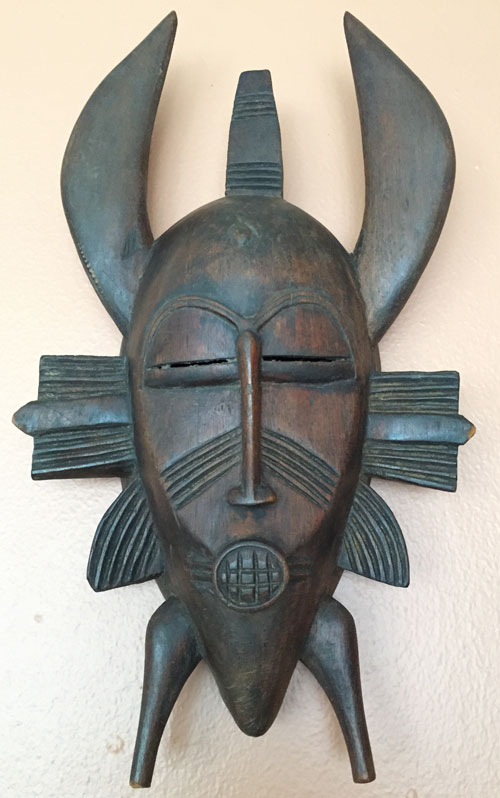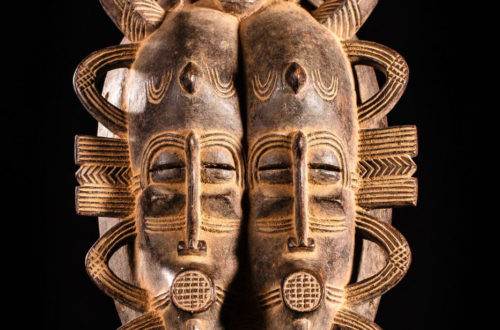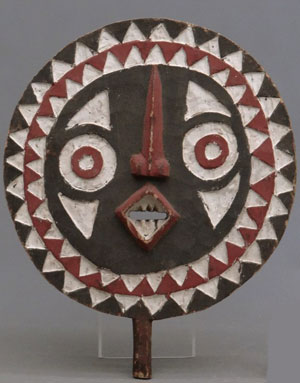Q: I’m just wondering if someone within your organization can help me? I have two African masks on my wall that, ever since my three month old baby was born, she has giggled and laughed nonstop at them. They really make her very happy. When she is upset and crying and looks at the masks, they immediately cheer her up. I am wondering if there is any significance and/or how I can find out? Thank you! Christina, 1781 A: Masks usually make many of our viewers (and me!) happy, but not these two. Both are made for tourists and people who know very little about tribal art (babies?). The mask…
-
-
Dogon Hare’s Mask with figure on top
Q: It is certainly Dogon, as it has all of the classic cubital facial planes typical of their masking. However, the seller identified it as a Dogon hunters mask. I’m not sure I’m convinced this is the proper categorization. First, the mask has all of the typical formations of the Hare mask (or Gomintogo) of the Dogo people of Mali. But what really sets it apart, and in my view, raises questions about its classification as a “hunters” mask, is the standing female figure on top. This is not typical of the hunters mask, although I’ve seen some images with female head mounts. Quincy, 1777 A: This looks authentic to…
-
Mbunda wise, old man mask
100 years old and heavily used, this badly damaged mask is still a joy to behold. Here is what Jean-Baptiste Bacquart has to say… The Mbunda live in West Zambia, on either side of the Angolan border. They are subdivided into groups (Subiya, Mbalango etc). The ‘Sachihongo masks’ of the Mbunda denote a powerful, mighty chieftain, a hunter and a medicine man, who had lived a long time ago. This mask of the ‘wise, old grandee’ is used in the initiation of boys where it embodies the figure of the all adjudicating respected authority. Carved in lightweight, light-colored wood and colored dark brown. On the front side can be found…
-
Turtle shell Bwami mask from Africa
Q: I purchased this mask for $150.00 today at an antique shop in Ticonderoga, NY. It’s made from a turtle shell. The antique shop owner believes it’s an aboriginal Indian ceremonial mask but wasn’t sure. I’m new to collecting masks and hoping I didn’t over pay but the mask looks very old and legit. Matthew, 1773 A: I don’t think you over paid by much. It’s new and made for sale to the trade, however this beautiful, well made mask is from the Lega tribe in the middle of the Democratic Republic of Congo, which is the largest country on the continent. Masks and figures are symbols of the Lega…
-
Old Bini mask from Nigeria
Q: If you can identify region. Alma, 1770 A: Alma, I wish you would write a bit more about this interesting mask. Who you bought it from, when, where, how much you paid, dimensions, etc. Any of this info might help a person remember something. I can’t remember seeing a mask like it, but will classify it as African because that seems like a descent guess. We know you would like to identify its tribe and location, as well as determine authenticity. Who knows, it could be quite valuable. Thanks for sharing your Mystery Mask with us. Bob (See recent comments)
-
African bird mask of questionable value
Q: I’m pretty sure this mask is a tourist repro, but would you be able to let me know for sure? Marie, 1763 A: It is definitely a repro. But there is much more we would like to know. Does it come from the Dan or the Baga people? Is it true to the tribe’s traditional designs and markings, or is it a mix of both? If it is the former I would give it a B. Mixes would be in the C range. This bird mask could have been made in Liberia or the Ivory Coast by the Dan tribe, or one of their near relatives. It probably represents…
-
Mysterious Pende mask
Q: I would like to have your views on the origins of this mask, which I bought for about $40 at an antique dealer in Montreal who was not used to dealing with African masks. As you can see, it is damaged and it seems rather old, and has has a very strong presence. The shape of the face somehow reminds me of some Pende masks I have seen, but this one remains mysterious. Jean-Francois, 1760 A: Despite the wear and damage, this beautifully carving does indeed make a strong presence. Unfortunately, I cannot identify the character it represents or tribal group from which it comes (along the Kwilu River…
-
Bundu mask from Sierra Leone
There are two other Bundus in our archives. This one is different because it has a white decoration and a full skirt. Used by the Sande Society for the passage into womanhood by Mende girls, it is the only mask in Africa that is not worn by men. Note that there are 1759 masks in this website’s archive. Press the “Q” on the right of the home page, type in a word and then press “Enter.” Keep trying different words or combinations until you get what you want. There are about 1000 more masks in the book, Masks of the World by Ibold & Yohn, which you can order on…
-
Kwere mask from Tanzania
The Kwere people (also called Doei) migrated to what is now Tanzania around 1000 A.D. from south of Mozambique. The Kwere do not have centralized political systems, but instead are based on self-governing matrilineal kin groups. Lineage heads are chosen by community leaders. These leaders are responsible for distributing land and maintaining lineage rituals. Leaders are also in charge of settling disputes between family members and are often attributed with having spiritual powers. Most Kwere believe in mulungu, a god who was associated with rainfall. Most prayers are directed to familial spirits. Religion among the Kwere is a household affair and every family member is responsible for appeasing its ancestral…
-
Yombe mask from DRC
Called a nganga diphomba, this handsome mask would have been made in what was then called the lower Belgian Congo. It is now in the Royal Museum of Central Africa. It was used for many different purposes in ceremonies for the Yombe people. As you can see, the carving is expert, where as the rough chin extension is there for a beard of buffalo hair to be attached. I hope you appreciate this mask as much as I do. The second nganga is a female version from the Brooklyn Museum of Art and was more quickly made and then used much more. Both would get an A. Bob, 1756
